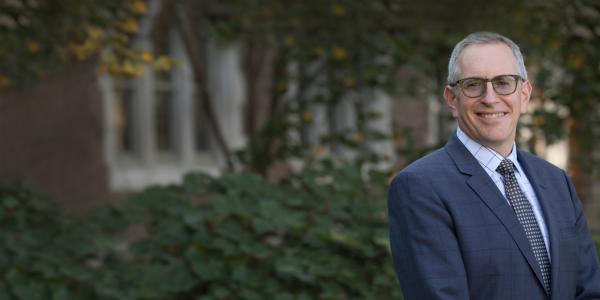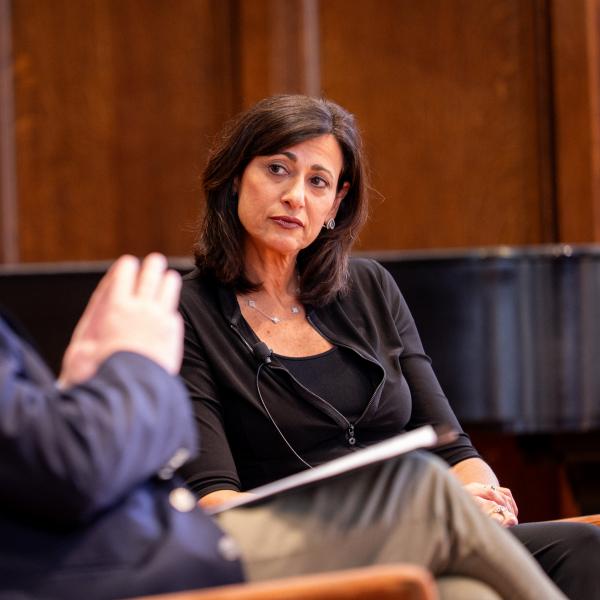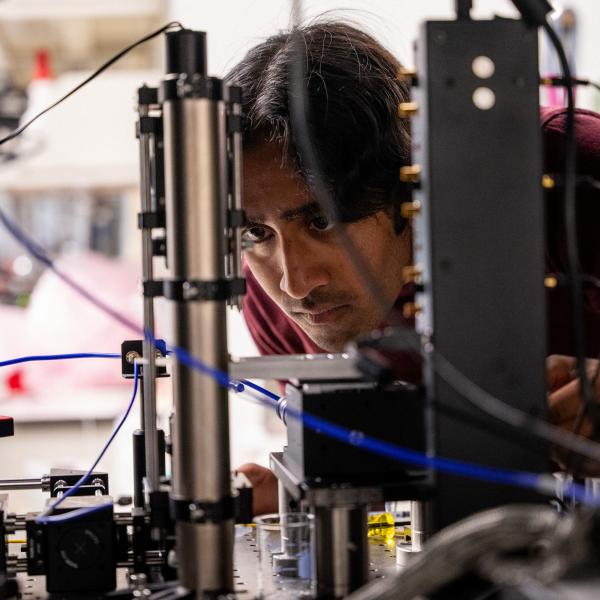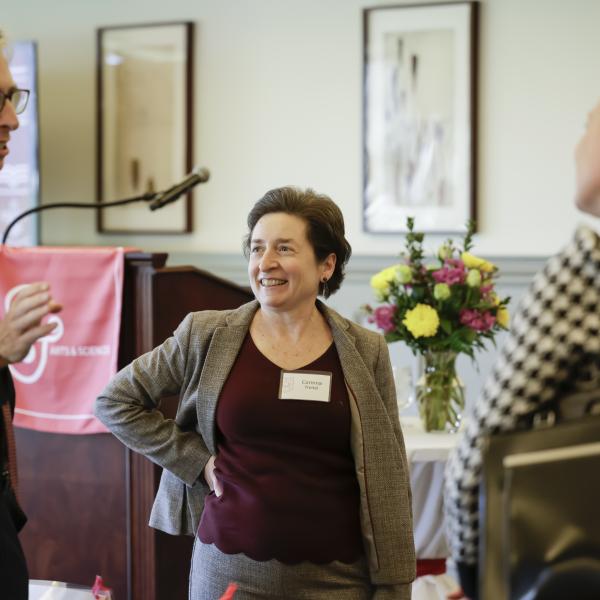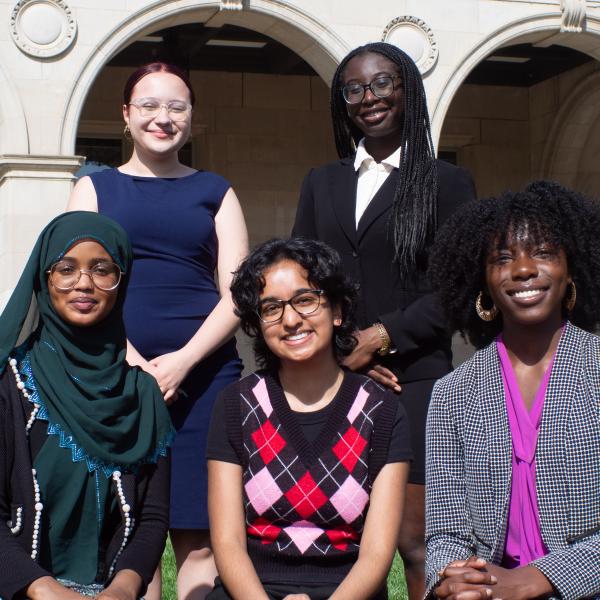William B. "Bill" Tolman is a chemist whose work focuses on the interfaces of inorganic, biological and polymer chemistry to address important problems related to human health and the environment. He will join the Arts & Sciences faculty this summer and will also serve as an associate dean of research in Arts & Sciences. The Ampersand sat down with Tolman as part of our ongoing series highlighting new faculty.
What first interested you about chemistry, and when did you first know you wanted to pursue chemistry for a living?
Chemistry intrigued me in high school, in large part because I had two outstanding teachers who made the concepts real for me, and who also challenged me in ways that were different from my other classes. But when I went to college, I thought I would major in marine biology, mostly because I had spent many of my summers growing up by the ocean in southern Maine, including working on a lobster boat. Also, in high school I read Rachel Carson’s seminal work “Silent Spring,” which not only drew me toward biology, but also instilled in me an appreciation that I still hold today for the importance of considering environmental impacts when doing science. But what changed everything was performing chemistry research for the first time as a sophomore at Wesleyan University. When I realized that a sample of a chemical substance that I had synthesized was unique, and had never been made by anyone in the world before, I was hooked. That was my “eureka!” moment. Chemistry research was fun to me, and engaging like nothing else because of the way that conceptual ideas about atoms, electrons, bonding—things that you couldn’t actually see—became real in the laboratory as we figured out how to make new forms of matter and understand how they behaved.
Is there a particular project or research question you're excited about right now?
Well, there are really two, which is reflected in the way my research group is divided between two areas. One project is focused on trying to understand how copper centers in biology function, particularly in enzymes that catalyze really difficult transformations. For example, because methane (a potent greenhouse gas) is readily available but challenging to transport (thus, it is often burned upon release from wells), it would be very useful to have a way of converting it to methanol, a more easily handled liquid that is also a good fuel. This requires the selective transformation of a single very strong C-H bond to a C-O bond. Amazingly, there are enzymes in nature that do this, including one containing copper ions that is found in bacteria. Those copper ions react with the oxygen in the air to form a highly reactive species that is capable of attacking the strong methane C-H bond, but nobody knows what that species is, nor how it works. We are trying to map out the chemistry of such copper-oxygen species by designing, synthesizing, and characterizing in exquisite detail molecules that contain copper-oxygen bonds. Through this work, we are figuring out how hypothesized copper-oxygen units enable tough reactions like the conversion of methane to methanol.
The second project in my group is focused on developing new ways of synthesizing plastics from biorenewable resources (plants), in an effort aimed ultimately at replacing petroleum-based plastics that are environmentally deleterious with alternatives that perform similarly but are degradable (under industrial composting conditions, for example) and, thus, sustainable. To do this, we are working on ways of converting biobased chemicals to useful monomers (the building blocks which when strung together form the long chain molecules, or polymers, in plastics), as well as trying to understand in molecular detail how the monomers are strung together by metal-containing catalysts.
You tweet as @WBTolman and have 2,500 followers on Twitter. What do you enjoy about social media and what impact do you think it has in your field?
Like most Twitter users, for me Twitter is a source of news and a bit of humor. But it’s also a place where conversations take place about all sorts of issues that relate to my work as an editor of a journal, to the conduct of science, to socio-political aspects of science, and to academic leadership. While I certainly do weigh in on broader political issues, I particularly value the opportunity to be an advocate for science, my specific field, and the people and institutions with which I’m involved as a scientist. I like to think that through my use of social media I am helping raise awareness of some of the social and public responsibilities we have as chemistry educators and researchers.
What are some broader issues in higher education right now that you are focused on?
In the parlance of NSF grant reviews, moving from being “very good” to “excellent” is a challenge that I’m thinking about a lot. The drive toward excellence in education and research requires many easily identified concrete initiatives (most of which require money), such as infrastructure improvements, hiring great faculty, support of multi-investigator and multidisciplinary institutes and centers, etc. Yet, I believe that the key to making an institution truly outstanding is in enhancing the underlying academic culture, and there’s a lot of work to be done in this regard, particularly within STEM departments (reflecting my own background and perspectives as a scientist and a chemistry department chair). We know that diversity in all its forms is critical to excellence, the attainment of which requires an inclusive, supportive environment within which faculty, staff, and students from all geographic, socioeconomic, sexual, and cultural backgrounds and orientations feel welcome, and thus enabled to reach their full potential. We also know that it is imperative for researchers in science and engineering fields to work in an environment where their health and safety are valued. What do we do to enhance a strong and effective culture of safety and inclusiveness, especially within STEM fields? I think if we address this question in creative, impactful, and long-lasting ways, we will empower outstanding faculty, staff, and students to lead us toward true excellence in education and research.
What are some of the reasons you wanted to come to WashU?
One particularly attractive characteristic of WashU is the clearly close-knit academic community that values a liberal arts education and the building of personal and intellectual relationships across the entire institution. In considering my move, I also recognized the extraordinary quality of the leadership team, and saw a wonderful opportunity to be able to learn from them and become a better leader myself. And, of course, the students at WashU are superb, and I was excited about the chance to live and work among them on a beautiful campus.
Anything you’re looking forward to doing in St. Louis? What do you like to do in your spare time?
My favorite activity outside of work is cycling, and I very much look forward to exploring the St. Louis area on two wheels. I also enjoy going to theatre, music, and sporting events with friends and family, and am excited about exploring these in the St. Louis area (recognizing that my emotional ties to certain American League baseball teams are going to be severely tested).
